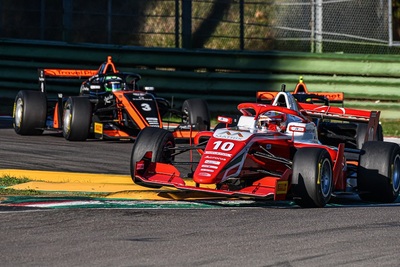Types of rallying
What do you do if you know nothing about motorsport? Don’t worry, we will explain the basic rules and essence of the types of tournaments.
Modern rallies are divided into amateur and sports. There are rally-raids, marathons, and rally-cross, but they are mixtures of these varieties and not independent types. Therefore, we will focus on two main types.
Amateur rally
Everyone can participate in amateur rallies – from the master of sports to the “teapot” who received the rights the day before yesterday. The only requirement is to have a driver’s license and a car.
Before the start, the crews are given a legend, which is a shorthand description of the movement route, indicating time control points and other paraphernalia. In the intervals between time controls, landmarks and the distance between them are marked in the legend, allowing athletes not to go astray.
In addition to the legend, athletes receive a route sheet, which indicates all the TC and time standards for moving from one to another.
To prevent this impression from happening, the organizers are desperately trying to create additional difficulties for amateur athletes.

What is a sports rally?
They differ slightly from amateur ones – the same CVs following one after another, devoid of sudden time control, with a “road tax” for being late and ahead of time. The difference in “special stages” is that only they determine the strongest.
In sports rallies, the requirements for the safety of cars and riders’ equipment are high, and the movement of other vehicles is also blocked.
When driving “to the fullest”, the crew’s skill and coherence and the rally car’s technical condition are of decisive importance. Therefore, all rally cars are divided into training groups depending on the allowable modifications and classes and the presence or absence of a turbocharger.
Formula 3 sports rally
The FIA Formula 3 is a motorsport tournament organized under the Formula 3 regulations of the International Automobile Federation. It was created from the merger of the GP3 Series and the FIA Formula 3 European Championship.
The races are held with Dallara single-seaters, supporting the F1 Grands Prix. It is one of the championships awarded the most points for the FIA Superlicence: including 30, 25, and 20 to the top three finishers, respectively.
The FIA Formula 3 tournament is a one-make competition contested by 30 drivers with the same chassis as the Dallara F3 2019. This has a Mecachrome V6 engine and tires supplied by Pirelli; No updates or improvements are allowed for the car’s development.
To participate in the category, drivers must have an international FIA grade A or B license.
Ten teams are admitted to the first season, each of which fields three riders, for a total of thirty participants at the start of the races. The debut of the category takes place on the occasion of the 2019 Spanish Grand Prix, on the Barcelona track, on 11 May.
Formula 3 cars and their characteristics
F3 puts forward the following requirements for cars:
- maximum width – 185 cm;
- minimum weight – 550 kg;
- wheelbase not less than 200 cm;
- teams cannot use traction control, active suspension and telemetry in racing sessions;
- engine displacement should not exceed 2000 cubic centimeters;
- maximum wheel width – 29.2 cm, diameter – 33 cm;
- formula 3 drivers can only use manual transmission!
Despite the constructors’ championship, this motorsport category has severe limitations regarding the technical characteristics of racing cars.
Formula 3 European Championship
The Formula 3 European Championship by Alpine is a racing series certified by the International Automobile Federation. The inaugural season started in 2019. On 12 October 2018, it was confirmed that Italian motorsport regulator Automobile Club d’Italia (ACI) and karting promoter WSK would organize the tournament.
Their offer was chosen over Renault Sport’s provide with the same chassis, which attracted fewer votes from the Single Seater Commission members. After the 2020 season, the competition experienced changes and got its current name.
The first season had eight rounds on the European circuits, half of them in Italy.

